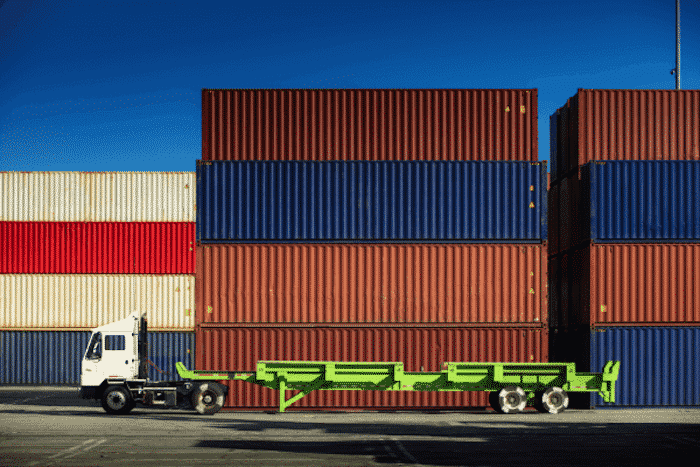What is Stuffing and Destuffing of Shipping Containers?
A newcomer to logistics can be baffled by the various terms used in the industry. Stuffing and destuffing are just two among several such logistics terms.
Stuffing is the loading of goods into a container while destuffing is the opposite of stuffing. It is the unloading of goods from a container.
About 85% of the 17 trillion USD worth of goods traded the world over in 2020 were transported in multimodal containers. The words ‘stuffing’ or ‘destuffing’ is mostly used when it comes to shipping containers.
However, they are also used when goods are loaded or unloaded from other modes of transport such as open trucks or large crates used to pack and transport goods.
Several factors are to be considered while stuffing or destuffing cargo. Here we have taken shipping cargo by sea, as the context. Let us take a look at stuffing first.
Every warehouse will have a daily plan for stuffing that is normally prepared by the warehouse operational staff. Stuffing of a container will usually coincide with the stack dates announced by the port for a particular vessel that the container is supposed to take.
Stack Dates and Container Stuffing
Stack dates are the dates announced by a port based on a ship’s ETA (Expected Time of Arrival). These dates are announced so that the shipper can send their loaded or empty containers to the port for loading onboard the ship on these dates. Stack dates may extend from 2 – 5 days within which the specific containers have to be delivered to the port.
Stuffing a container on time is critical in meeting the port’s stack dates and more importantly in the sailing of the ship as per schedule. Stack dates help the port to store, move, and load the containers onto the ship in an orderly manner. Missing the stack dates might result in the container being denied entry to the port and ultimately missing the sailing.
Know more about stack dates here.
Readying Goods for Stuffing
Most commonly known as loading, stuffing also goes by many other names such as stowing, filling, etc.
The process of stuffing starts when an empty container arrives at the warehouse yard, according to the daily stuffing plan and as agreed with the transporter or freight forwarder. The condition of the container along with its cleanliness and hygiene has to be ensured first.
There may be goods that are incompatible and therefore should not be loaded together in a container. An example being detergents and food materials. Any such omissions in planning have to be brought to the attention of the warehouse supervisor immediately by the loading staff for the necessary action.
Certain types of goods have to be loaded in pre-cooled reefers (refrigerated containers). In such cases, the receiving staff has to check and confirm that the reefer arrives pre-cooled and is set at the required temperature.
The MHE and manpower necessary for the operation must be ready by the time the container arrives at the warehouse. The empty container is then positioned at the allotted loading bay, ready for loading.
When there is more than one container for stuffing, the warehouse operations planner may arrange for more than one loading bay, MHE (Material Handling Equipment), and the personnel accordingly. This saves time but takes up extra space, equipment, and manpower. When a single bay is used to stuff cargo in multiple containers it will take more time to complete the operation.
The warehouse staff has to ensure that the goods are picked and kept ready for loading at the marshaling yard available nearest to the loading bay.
Goods have to be packed and labelled as agreed between the buyer and seller and according to the requirements of the relevant authorities.
Special packaging requirements apply to toxic materials, certain types of drugs, etc. Goods may have to be palletized and shrink-wrapped or packed in cardboard or wooden cartons. Goods such as electronics and other fragile items may require shock-proof packaging material to prevent them from damage during handling and transit.
Goods for stuffing have to be labelled according to the statutory requirements of the exporting as well as the importing countries. The exporter/shipper will have to ensure that he has the complete and correct details for this. Labels meeting all these standards have to be fixed on all cartons or units.
Most warehouses pre-pick the orders meant for loading and keep them in the marshaling yard located near the loading bay for convenience. Once the container arrives, these prepicked goods are moved inside the container.
When chilled or frozen items are transported, they have to be picked from their storage locations and loaded directly into the container. Such items cannot be kept out in the open as it will result in the deterioration or spoilage of the cargo.
Typically, small to medium-sized individual packages that are not palletized are handpicked and stacked on pallets. Pallet-loads are easily handled by forklifts. But such individual packages have to be hand-stacked once inside the container. Palletized and shrink-wrapped goods are picked by forklifts and stacked directly inside the container. For this, either manual or battery-powered forklifts are used.
Goods may be hand-stacked inside a container without palletization to maximize utilization of container space. In this case, the container has to be packed full to avoid shifting of goods within the container during movement. Palletization and shrink-wrapping help to contain the cargo and minimize its shifting within the container during handling and transport.
The loading staff has to ensure that goods are handled carefully and that it is stacked inside the container in a well-balanced, yet compact arrangement. They should be aware of the weight limitations for the cargo set by the relevant transport authorities or the shipping line.
Containers of different sizes and types have different payloads. Payload is the weight that a container is capable of carrying safely. Typically, a 20’ GP container can take 21450 kilograms while a 40’ GP van can accommodate 26850 kilograms of cargo.
Destuffing of Container
Destuffing, sometimes referred to as devanning, requires the same planning as stuffing. A container bay should be ready to receive the container. The warehouse staff must ensure that the required storage space is free inside the warehouse to put away the incoming cargo.
The staff receiving the goods must confirm that the container that comes in is in good condition and that the container seal is intact. The container seal is a one-time lock that is affixed to the container door by the original shipper of the cargo. It is usually removed in the presence of the customs officer who is present at the warehouse at the time of destuffing.
If customs inspection is done at the receiving port, then the container seal is cut from the port in the presence of the customs officer. Once the inspection is completed, the consignee or the receiver would lock the container using his lock and transport the container to the warehouse.
Information on container seals is available in this article.
When the container door is opened, damages if any, have to be noted down. For high-value cargo that is prone to damage during transit, it is advisable to have a representative from the insurance company present while the container is opened. The representative can then record damages and other details, directly. In the event of an insurance claim, this makes it a little easier.

The goods receipt is recorded by the warehouse staff and these details are given to their inventory control or inventory administration section who will account for it in their records accordingly.
Goods coming to the warehouse may or may not be palletized. Such goods will have to be stacked appropriately on pallets with or without shrink-wrapping, before being moved to their assigned storage racks and locations.
In some warehouses, cartons are sometimes stacked on the floor without palletization. When stacked on the floor, especially when there is a large quantity of stock, locating and picking goods at a later stage can be cumbersome.
As most modern warehouses use the WMS (Warehouse Management System) and the WMS picking rules, they prefer to store goods on racks that are easily accessible, rather than resort to floor stacking. If the incoming cargo requires labelling, then that has to be completed before it is put away on the racks.
Cross Docking and Destuffing
Cross docking is a time-saving and cost-cutting method used to transport goods to the customer. In cross-docking, the incoming goods are destuffed, checked, and loaded immediately onto the transport that will take it to its final customer or destination. There is no storage involved in this process as the activities after destuffing and before dispatch, are all carried out from the warehouse marshaling yard or the staging area.
Cross docking helps to move the cargo immediately upon receipt to its customer.
Know more about Cross docking in this article.
The warehouse employees who handle stuffing, de-stuffing, and cross docking have to be well trained in handling the different types of goods, the MHE, and in using WMS. These jobs cannot be done casually. They are part of a well-planned operation requiring experienced and dedicated warehouse staff.
You might also like to read:
- Understanding the CSC Plate Of Shipping Containers
- What is Merchant Haulage?
- What is Demurrage and Detention in Shipping?
- What Is Consignee And Consignor In Shipping?
- What is Drayage in Shipping?
Disclaimer: The authors’ views expressed in this article do not necessarily reflect the views of Marine Insight. Data and charts, if used, in the article have been sourced from available information and have not been authenticated by any statutory authority. The author and Marine Insight do not claim it to be accurate nor accept any responsibility for the same. The views constitute only the opinions and do not constitute any guidelines or recommendation on any course of action to be followed by the reader.
Do you have info to share with us ? Suggest a correction

About Author
Hari Menon is a Freelance writer with close to 20 years of professional experience in Logistics, Warehousing, Supply chain, and Contracts administration. An avid fitness freak, and bibliophile, he loves travelling too.
Latest Maritime law Articles You Would Like:
Latest News
- What is the Purpose of DG Shipping?
- What are Logistics Risks?
- How Port and Terminal Operators Can Control Emissions?
- Minimum Quantity Commitment (MQC) and Liquidated Damages in Container Shipping: Concept and Relevance
- MARPOL (The International Convention for Prevention of Marine Pollution For Ships): The Ultimate Guide
- The Ultimate Shipping Container Dimensions Guide
Subscribe To Our Newsletters
By subscribing, you agree to our Privacy Policy and may receive occasional deal communications; you can unsubscribe anytime.















